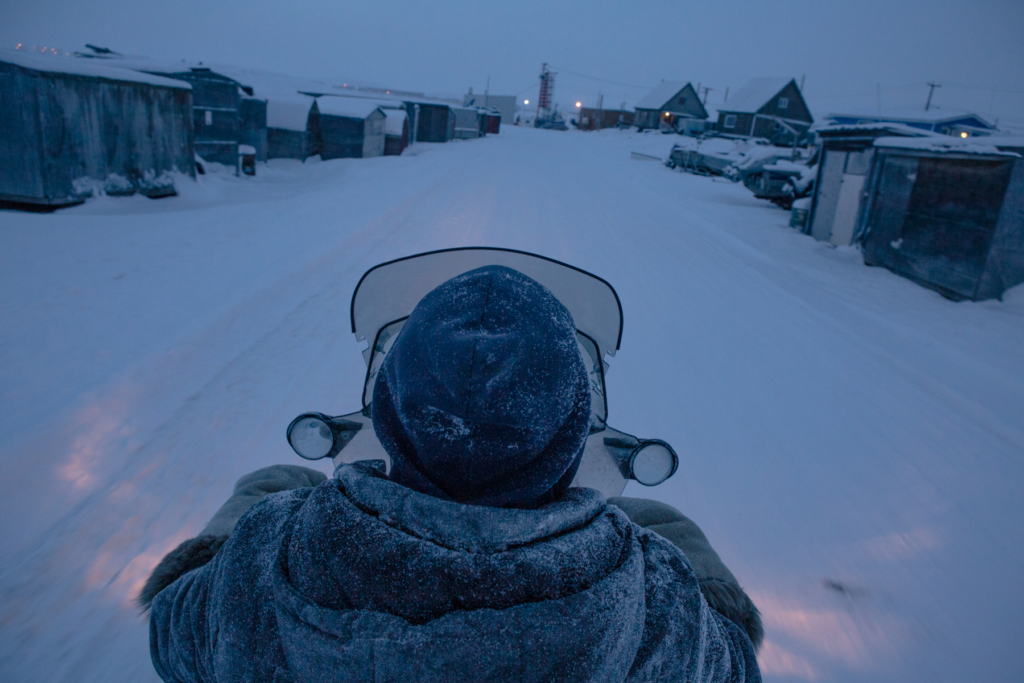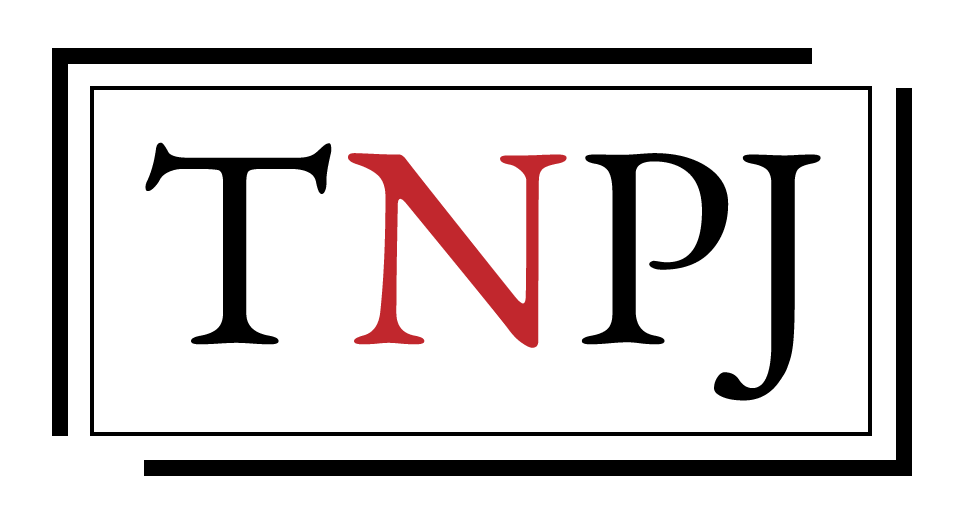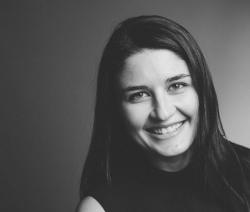Nunavut’s Young Hunters
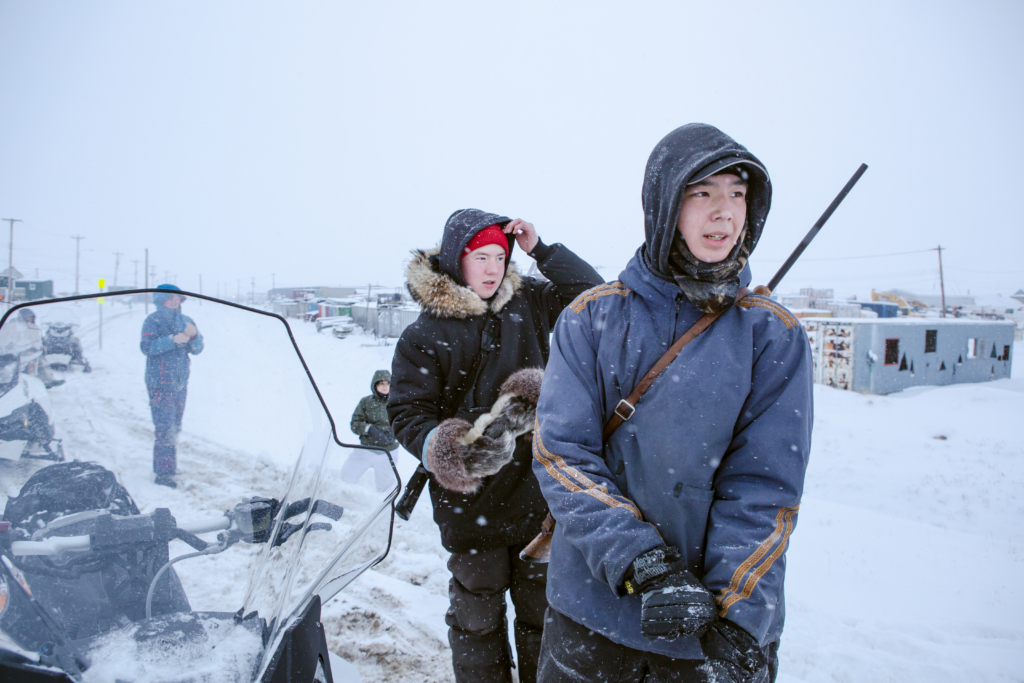
Nunavut’s Young Hunters:
Program in Iqaluit aims to pass on Inuit tradition to next generation
It was an unseasonably warm sunny day last October, yet myself and half a dozen Inuit youngsters were bundled up in parkas and snow pants to keep us warm from the Arctic winds blowing up from Frobisher Bay. Alex Flaherty and Kevin Kullualik, experienced hunters and youth program leaders at Polar Outfitting, were taking a group of young teens on the land to hunt for harp seals just outside of Iqaluit.
But we had not seen any seals that morning, so Kevin brought one of the boats to an island where he had harvested 17 arctic hares that summer. Within minutes of setting foot on land, the golden sun revealed tracks. We split into two groups. Soon we were running in our heavy winter gear over rough, rocky terrain covered in patches of snow, ice, and slippery algae.
Eleven-year-old Kaniq Allerton, Carter Kennedy, 10, and myself climbed to the top of a rocky outcrop. We stopped to catch our breath and take in the scenery. The kids rubbed snow in their faces to cool down. Just then, we heard a shout, and suddenly we were off on a rabbit chase.
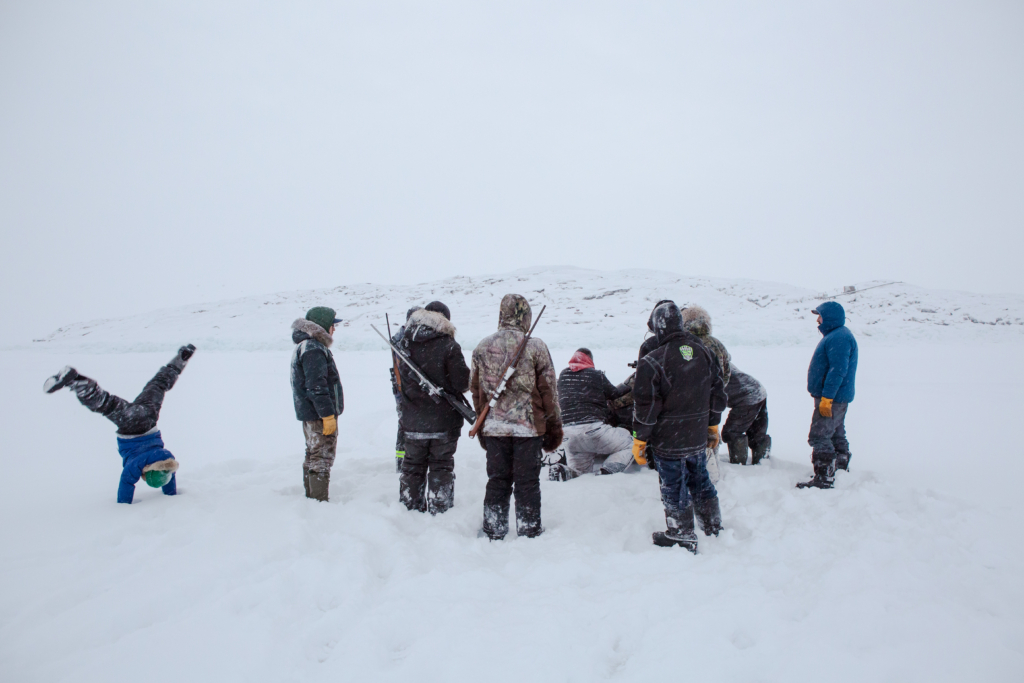
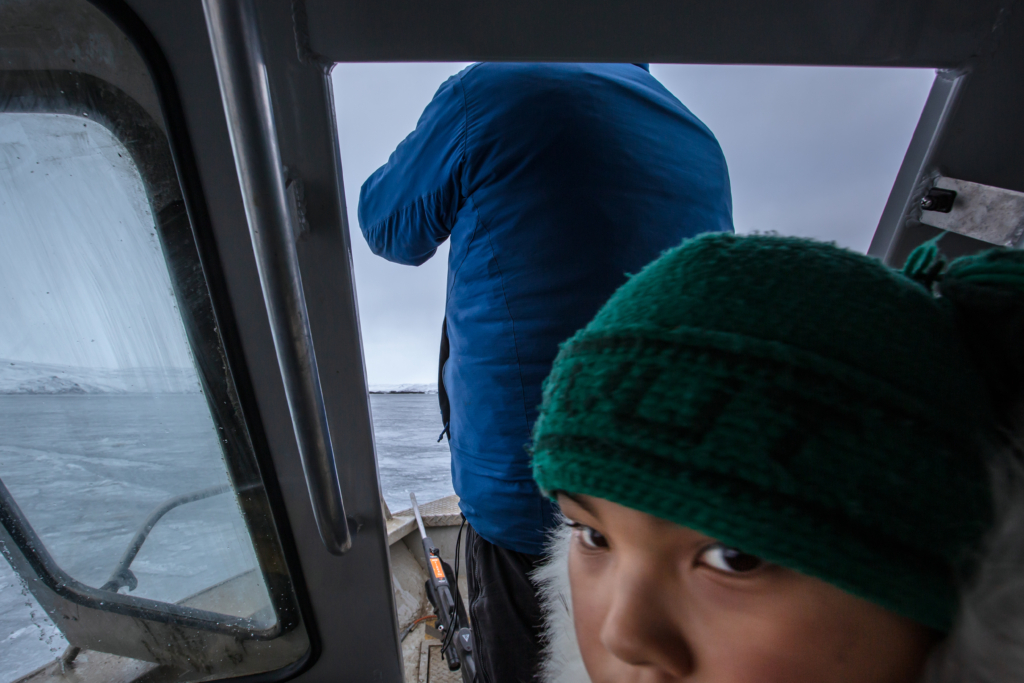
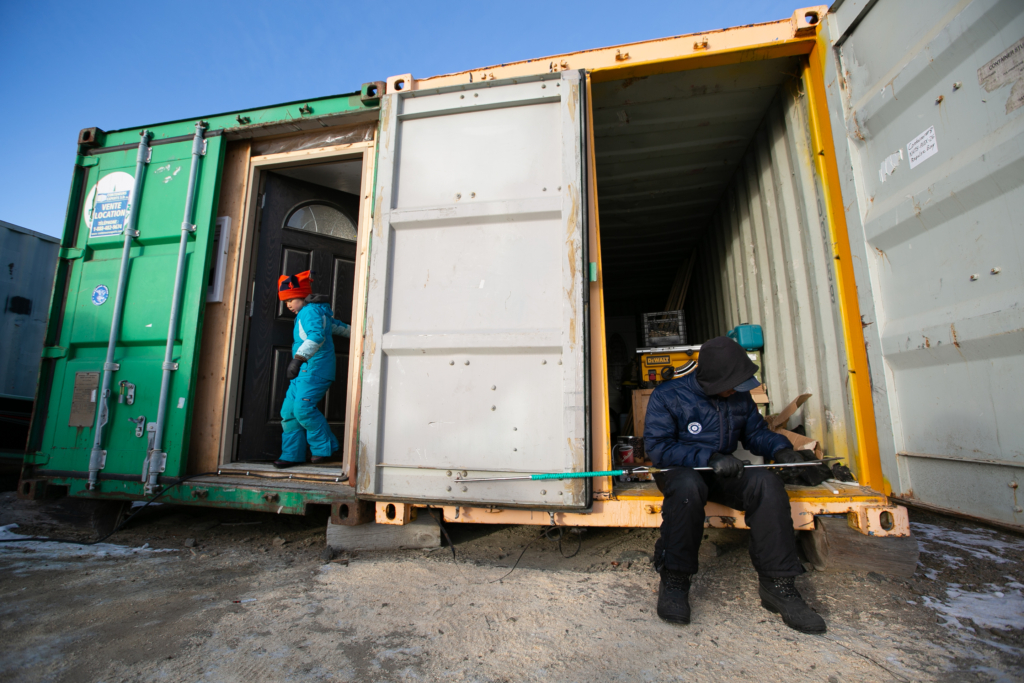
I had been living in Iqaluit for two months in the fall of 2018, when I saw a post on a local Facebook community group that caught my attention. Alex Flaherty was seeking youth to join him and his team at Polar Outfitting for a day of seal hunting. I messaged Alex to see if he could use a photographer to document the trip and he invited me to join.
Since they first started operating in 2018, Polar Outfitting’s Alex Flaherty, Kevin Kullualik, and Harvey Veevee have been having a deep impact on a new generation of hunters in Iqaluit. Each workshop, typically enrols about a dozen youth a time with topics ranging from traditional Inuit toolmaking, youth trapping, ice safety, ice fishing, and seal hunting.
“My goal for this project is to see the kids leave our class everyday with their chins higher and feeling confident about themselves,” says Flaherty, who grew up in Grise Fjord, one of the most northern communities in Nunavut. “We introduce kids to the everyday, outdoor activities, [but] it’s also learning about where you come from and being proud of who you are.”
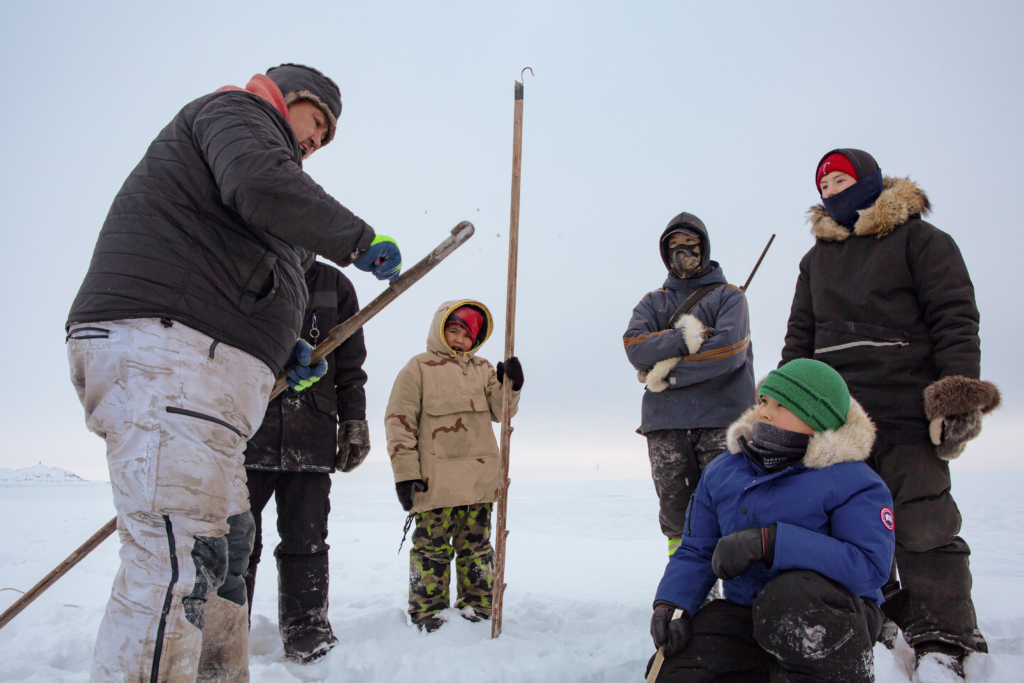
On the morning of my first excursion, I spotted Kaniq standing on the shore in his parka and backpack. He looked out to the ocean with anticipation. I was approached with a warm greeting by a Francophone woman, Laura Thompson, the boy’s adopted mother. Through my small talk with Laura and her partner, Derek Allerton, she revealed to me that this was the first hunt for their son, who was 10-years-old at the time. She said he was so excited, that this was all he talked about for days leading up to the hunt.
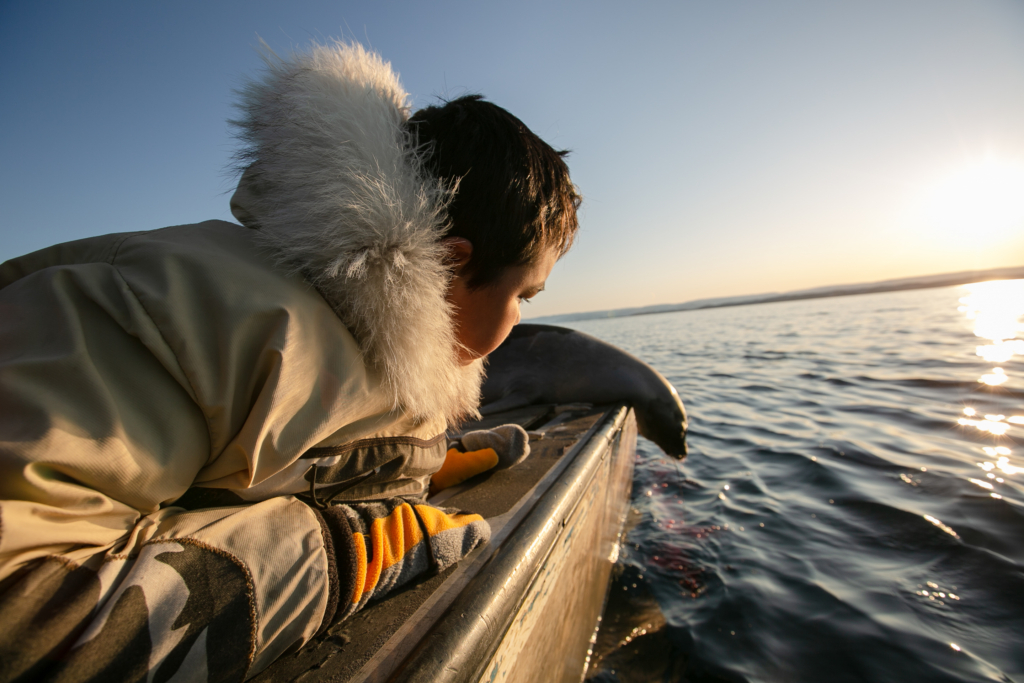
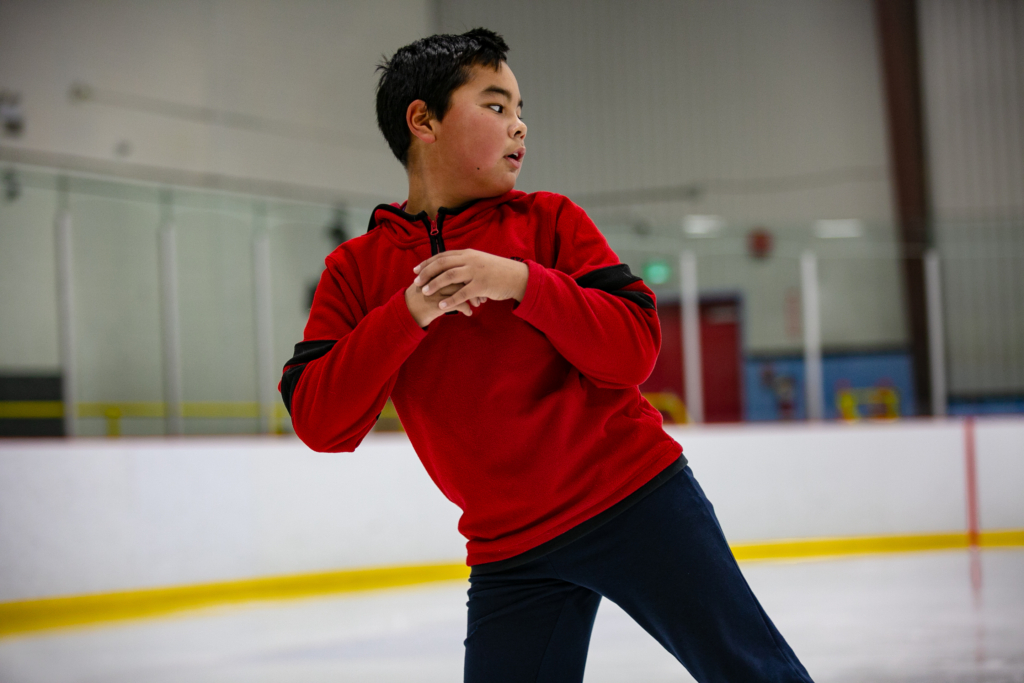
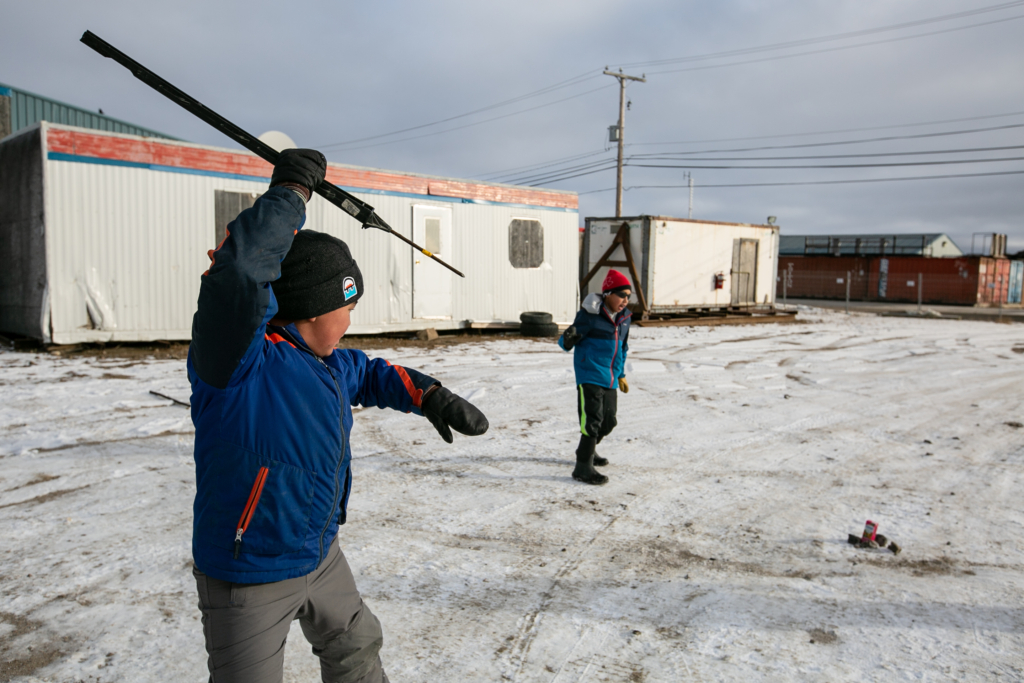
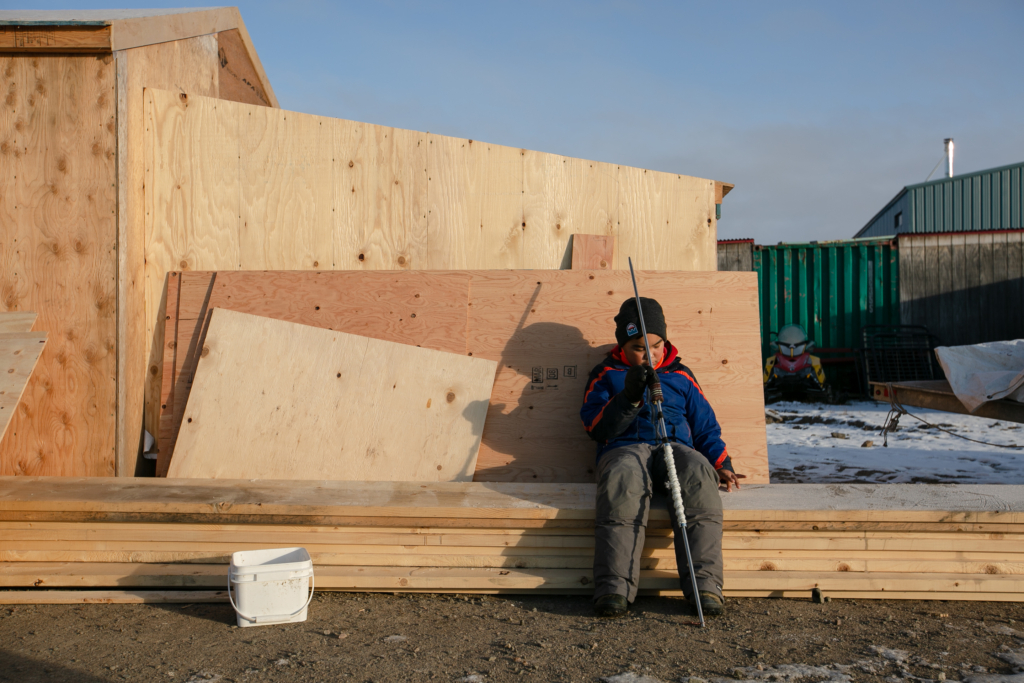
It was a year later when I found myself chasing arctic hares with the boys. Later that day, we set off on a second search for harp seals. With the help of Kevin Kullualik, the teens shot two seals and brought them onboard. Kaniq was given the spot of second shooter. His rifle skills were proven earlier that day when the boys had a shooting competition using fat marshmallows as targets. Kaniq came out victorious, never missing his mark. Although he loves to play games with his friends and sister, I have watched him on hunts and on the ice rink during his figure skating lessons. He bring his focus and enjoyment to everything he learns. Kaniq is a happy kid growing up in the Arctic, and through hunting programs like this, he is gaining the skills in order to thrive here.
“As parents, we have noticed a deep sense of pride and joy in our son as he developed his own awareness and understanding of becoming a young Inuk in his own homeland,” Kaniq’s mother explained in a recent conversation.
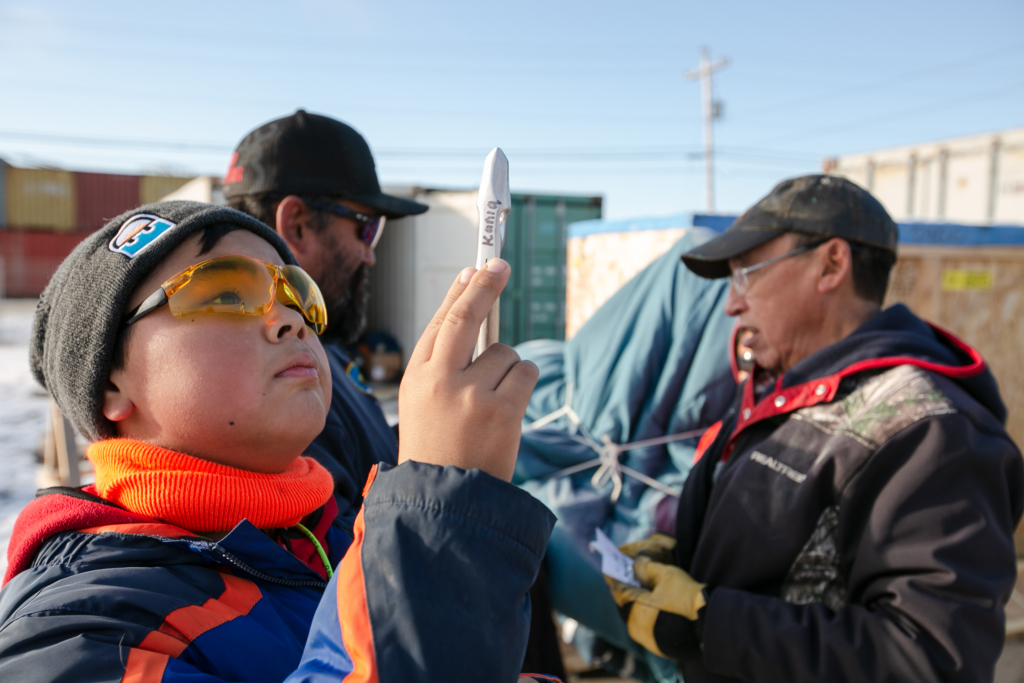
To help support the workshops, Polar Outfitting gets help from the Nunavut Literacy Council (Ilitaqsiniq in Inuktitut), which assists in program development and secures funding from several sources including Makigiaqta, the department of family services, culture and heritage, as well as the health department’s community wellness program.
“The kids learn the basic knowledge of living in the north, the struggles we have, also they learn about sustainable harvesting, sustainable trapping, the benefits that come with being a harvest, and being able to prepare and handle, and sell your pelts,” says Flaherty. “Kids learn the foundation of [hunting] with today’s technology, [but] everything is very expensive. A lot of kids don’t get the opportunity to live on the land, be able to go on the land, and learn the valuable stuff they need to learn in the Arctic.”
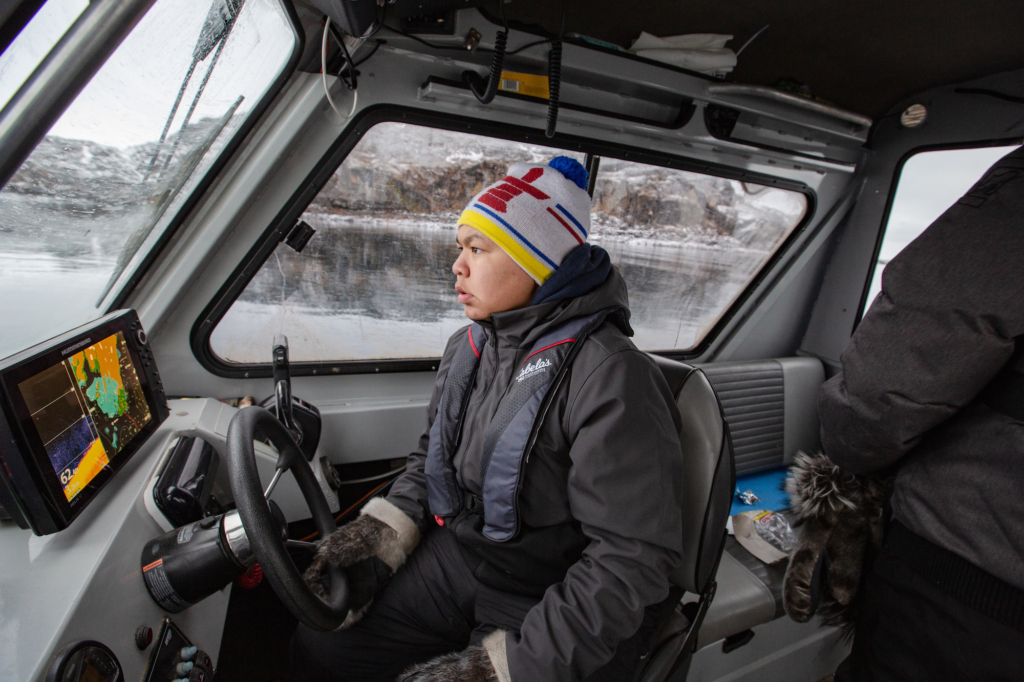
The Inuit population is now the youngest in Canada, with 51 per cent under the age of 25, according to a Statistics Canada 2016 census. While Inuit land claim regions occupy 40 per cent of Canada’s land mass, Nunavut is the least populated of Canada’a 13 territories and provinces. The largest community is the capital Iqaluit, with a population of about 7,000. With half being Inuit and the other half non-Inuit Canadians, it is common to hear local Nunavummiut lament the loss of traditional culture and Inuktitut language, which are disappearing faster than any other community in Nunavut, where Inuit typically make up at least 90 per cent of the population. With more people taking on a more southern way of life and the lasting impact of intergenerational trauma from Canada’s history of residential schools and relocation programs, fewer children are learning Inuit skills and language and many are spending less time on the land compared to their grandparents.
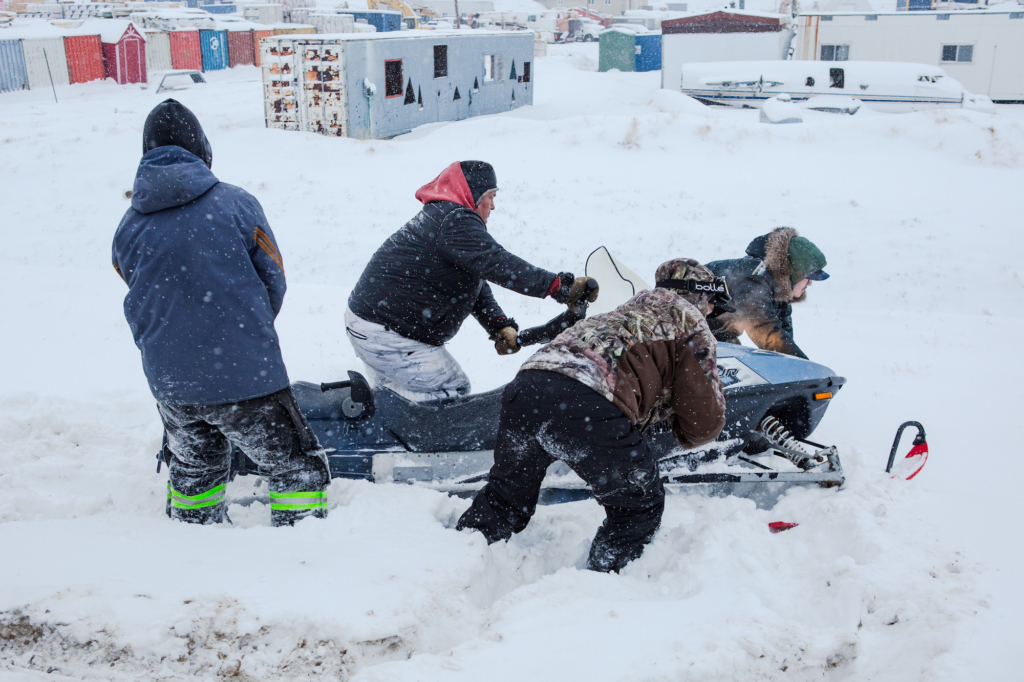
“As Qallunaat (Inuktitut for non-Inuit) parents of Inuit children, we feel strongly about Indigenous voices first,” says Kaniq’s mother, Laura Thompson. “In Nunavut, the education system is fundamentally colonial. The Inuit language of Inuktitut is not the main teaching language in schools, nor are Inuit cultural practices permeating the southern Canadian curricula mandated here. Thus, the learning process for the younger generation of Inuit is problematic, especially during a global climate crisis. Inuit children and youth need to learn about the Arctic from Inuit elders, hunters, trappers and outfitters because they are the cultural knowledge keepers of the Arctic.”
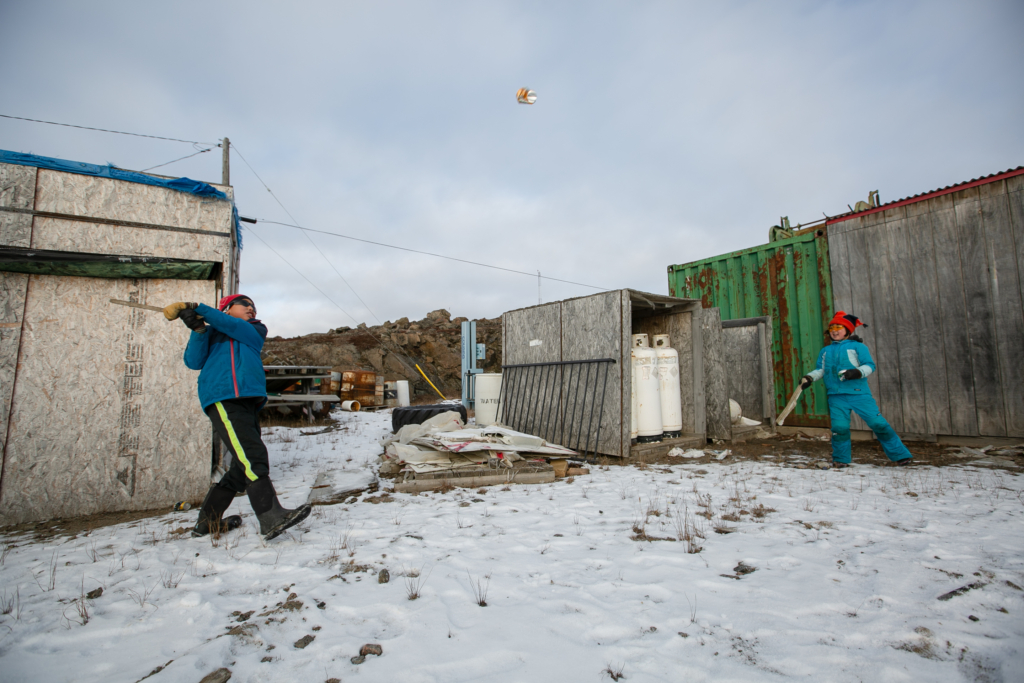
Fourteen-year-old Damian Young was one of the young boys taking part in the seal hunt in November. His family are experienced hunters and he has grown up hunting alongside them. At fourteen-years-old, he had already hunted a caribou and a whale. When I asked what he wanted to do after high school he was quick to respond: a full-time hunter, and maybe even obtain a university degree in marine sciences and management; a similar route that Alex Flaherty took.
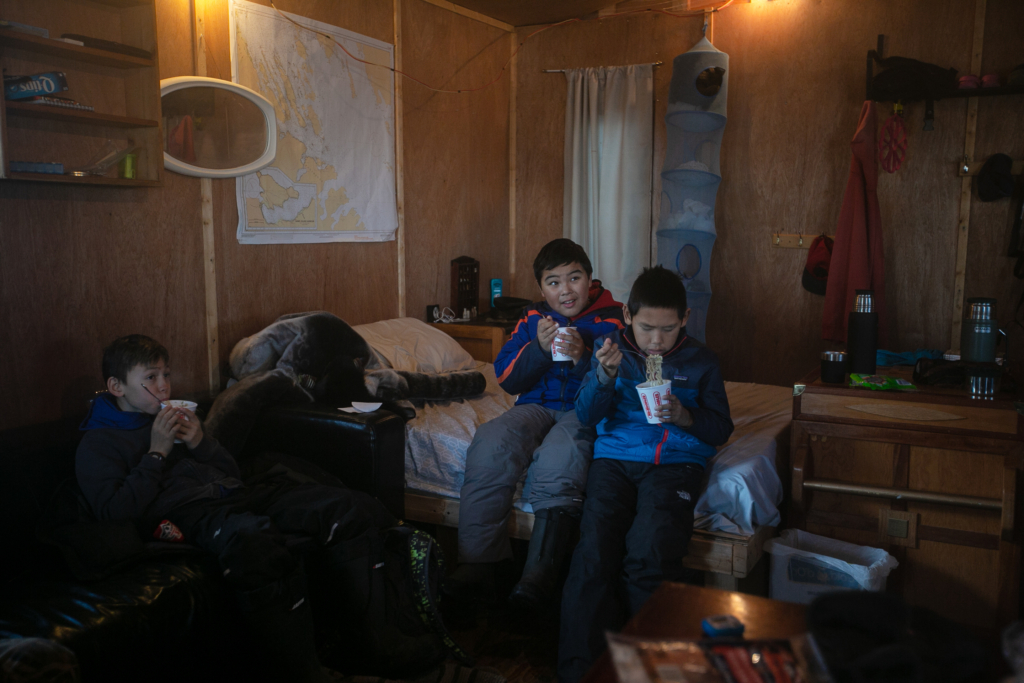
While the Literary Council currently only runs the young hunters program in Iqaluit at the moment, Adriana Kusugak, executive director of the Nunavut Literacy Council, says she would like to see it expanded to other communities so that youth can get the same opportunities as those in the capital.
“At the end of the day Ilitaqsiniq is working hard to support Nunavummiut to achieve their goals and engage in cultural practices that bring a sense of well being, connection and self-confidence to our participants that support them to go on and achieve even more in life.”
